Are you ready to learn the BEST way to organize your classroom library? Here’s a little secret: there’s no right or wrong way to do it! No two classrooms are the same, and every teacher has different goals and needs. Experiment to find the system that works best for you and your class. A great library organization system is one that students can understand, use independently (after modeling and practice!), and ENJOY!
An organized classroom library will:

A big thank you to the AMAZING teachers in our Facebook community, Lucky 1st Grade Teachers and Lucky 2nd Grade Teachers for sharing lots of photos of classroom library organization options. Join our groups for lots more organizational tips and ideas for your classroom!
Note: This post contains Amazon Affiliate links. If you click and purchase, I may receive a small commission at no extra cost to you.
Idea #1: Organize by Theme and Subject
One of the most popular ways to organize your classroom library is to divide books by theme and subject. Place books with similar themes, like Friendship or Kindness, in the same baskets. Sort books with similar subjects, like outer space or dinosaurs, in their own baskets. Having colorful, easy-to-read labels with pictures on the front of the bins will help readers of all levels find just the book they are looking for.

Idea #2: Organize by Character, Author, and Series

Young readers are drawn to familiar characters. Some teachers choose to sort their libraries with bins dedicated to favorite characters – think Elephant and Piggie, Pete the Cat, Clifford, and more! A similar approach is to organize books in bins by the same author – this is also helpful if you are doing a classroom author study! Finally, (and this seems like a no-brainer!) put all the books from the same series in the same bin. There’s nothing more exciting than a young reader getting hooked on a new series of books. Put all the Magic Tree House, Dog Man, etc. in the same bin, so readers can find the next book in the series with ease.

Idea #3: Organize by Fiction vs. Nonfiction
Some students love fairy tales, others are drawn to facts and figures, and some enjoy a mix of both! Make it easy for all readers to find books based on their interest by separating books into fiction and nonfiction titles. This approach mirrors how books are organized in a public library.
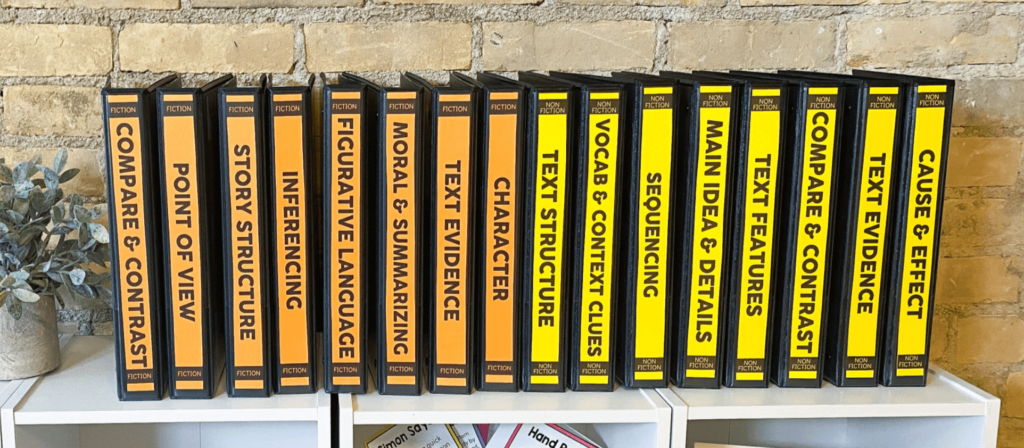
The picture above shows our 2nd Grade Reading Comprehension and Fluency Passages organized by nonfiction (yellow) and fiction (orange). Check out the video below to get a closer look at what’s inside the binders!
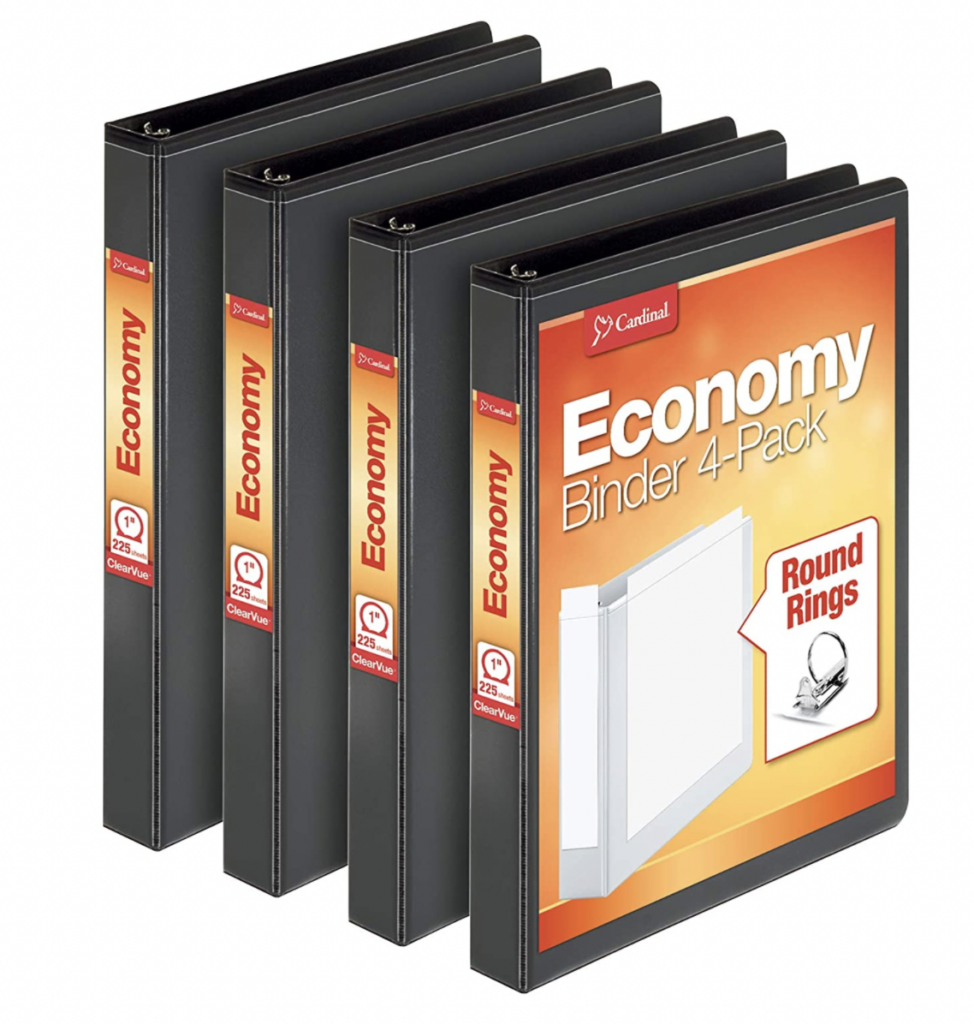
Idea #4: Organize by Seasonal Surprises and Teacher’s Choice

Keep your book rotation fresh and surprising with bonus seasonal bins! These are books grouped by theme, subject, or holiday, that only appear once a year. For example, a Back to School Bin, and Winter Fun Bin, or a Valentine’s Day Bin will thrill your students. Who doesn’t love choosing a brand new book? Including a bin with a few teacher-chosen favorites is also always popular!
Idea #5: To Level, or Not to Level?

Organizing books by reading level is a hotly debated subject. Some argue that readers should be exposed to a variety of books, even those far beyond their independent reading level. Others believe that sorting books by level is the best way for readers to practice their independent reading skills and grow as readers. But what if there was a happy compromise between both theories? Many teachers choose to keep separate bins of leveled readers (books that come with your reading curriculum, or supplementary reading texts) so that readers can choose 1-2 on-level books to practice, in addition to their own choices from the library.

Labeling Books & Bins
Now that you’ve sorted and organized all your books into the correct spots, how do you keep your library organized and running smoothly once students begin to borrow and return books? It’s as easy as learning your ABCs and 123s!
Idea #1: Label With ABCs
Follow basic library science and organize picture books in alphabetical order by the author’s last name. This is the same method that professional librarians use in the picture book section of the library. If it works for the pros, let it work for you! Label the side or front of each book with a sticker with the first letter of the author’s last name, and clearly mark your shelves or baskets with the matching letter so students can find the correct place to return their books. These labels work great!
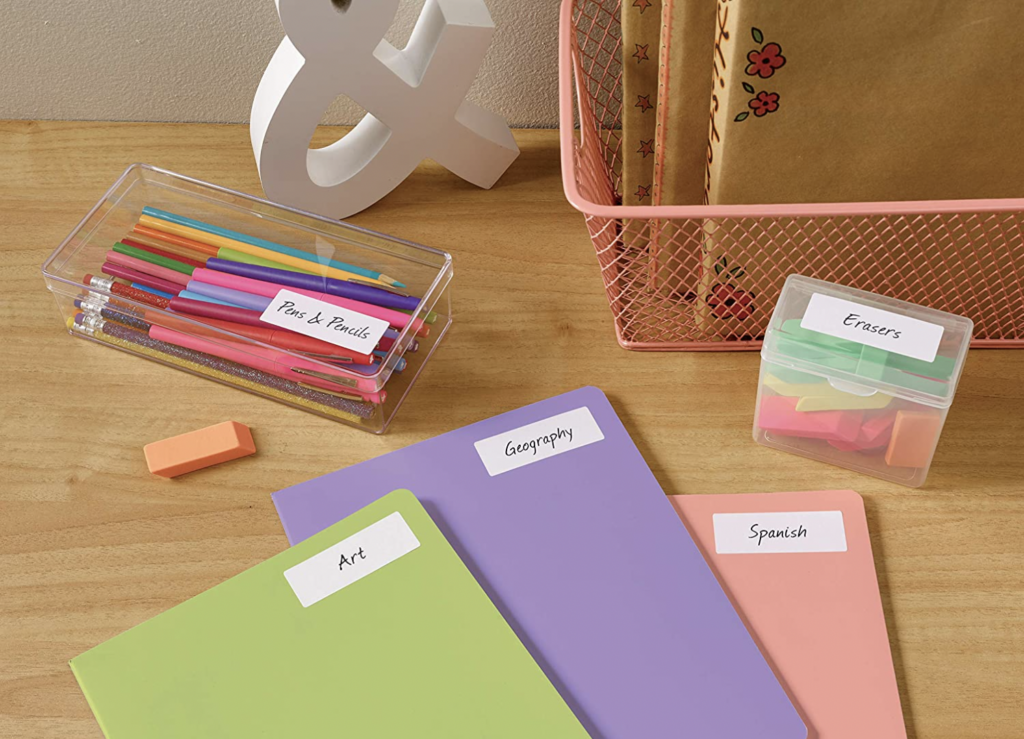

Idea #2: Label With 123s

The numbered book box method works well for some teachers. Label each bin with a number, then label a set number of books with the same number. Students match the numbers to return the books. Bonus organization if you keep the same number of books in each box – then you can easily look to see how many books are checked out of each box.

Idea #3: Use a Color-Coded System
The Home Edit may have taken social media by storm in 2020 with their rainbow library organization, but veteran teachers have been color-coding books for a long time! Place a color sticker on the spine of the book, and all students have to do is find the matching color bin! Easy-peasy, and works well for visual learners.

Color-Coding Supplies
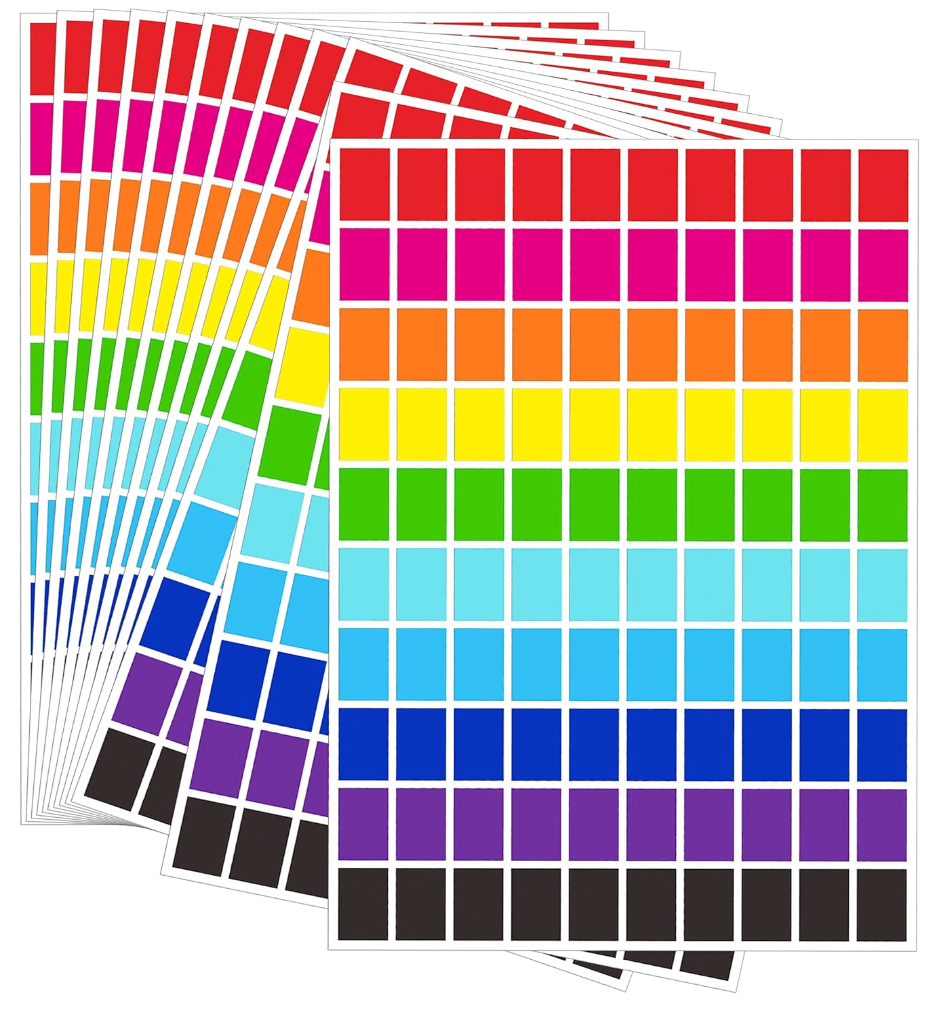

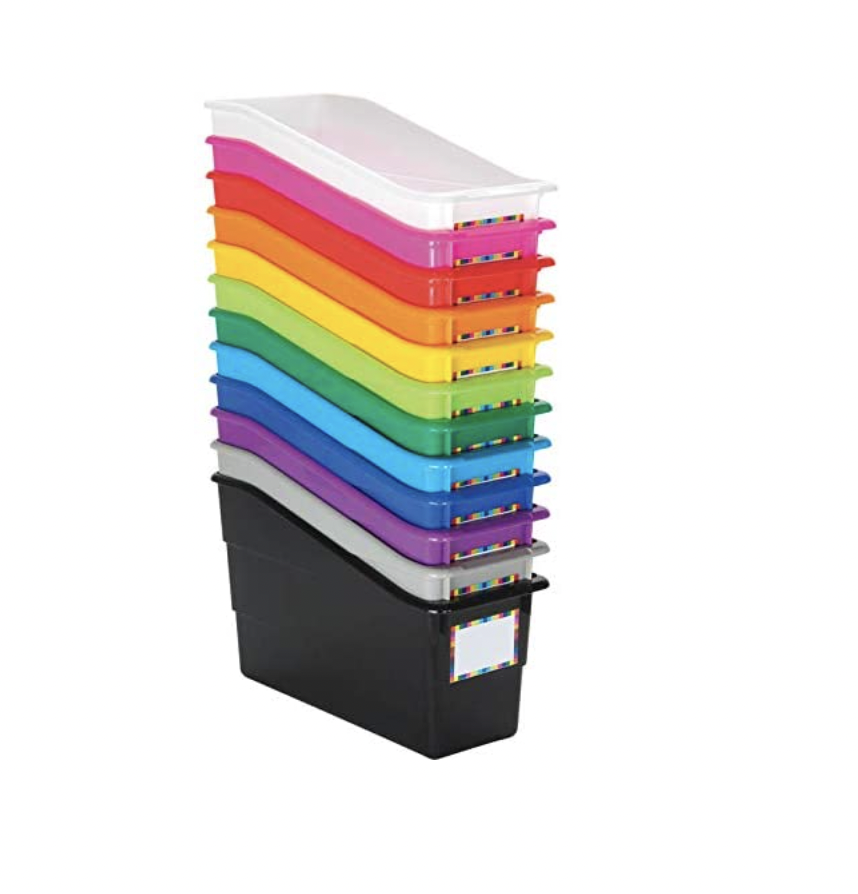
Classroom Library Organization & Storage Options
We rounded up some great all-purpose organization options for whatever your library needs!
These bins come in a few different colors.
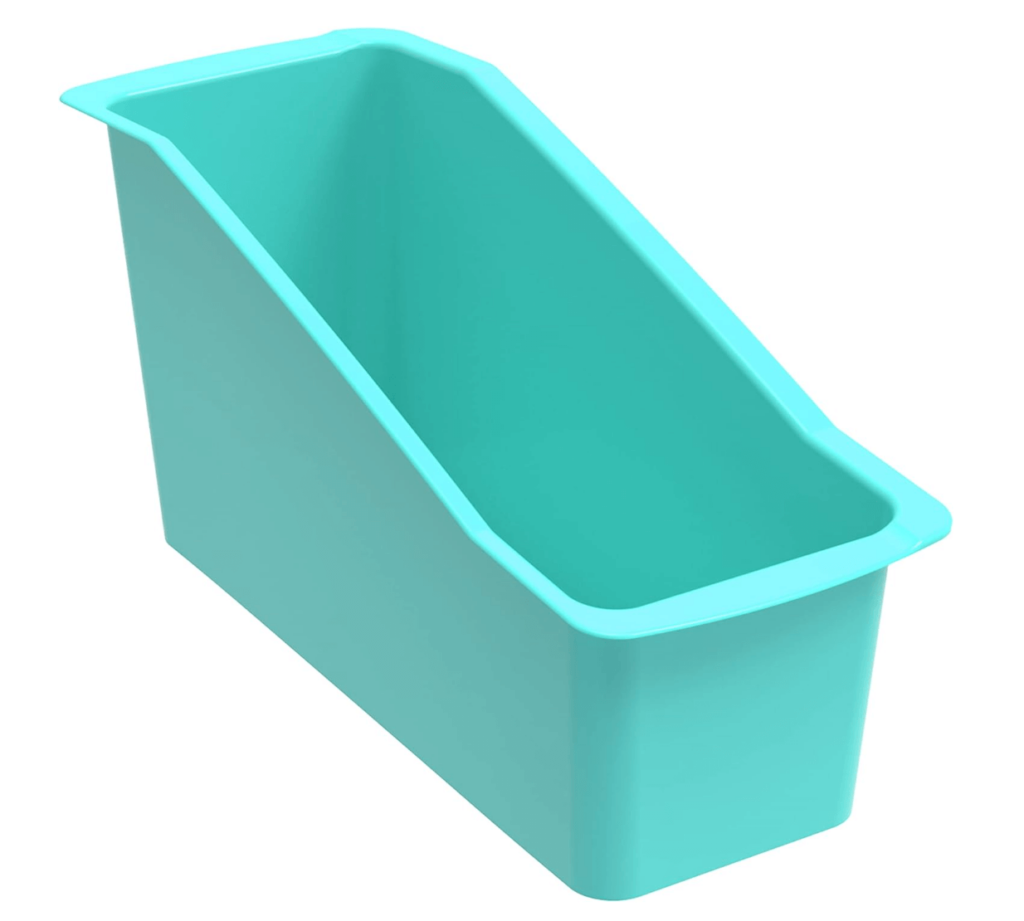

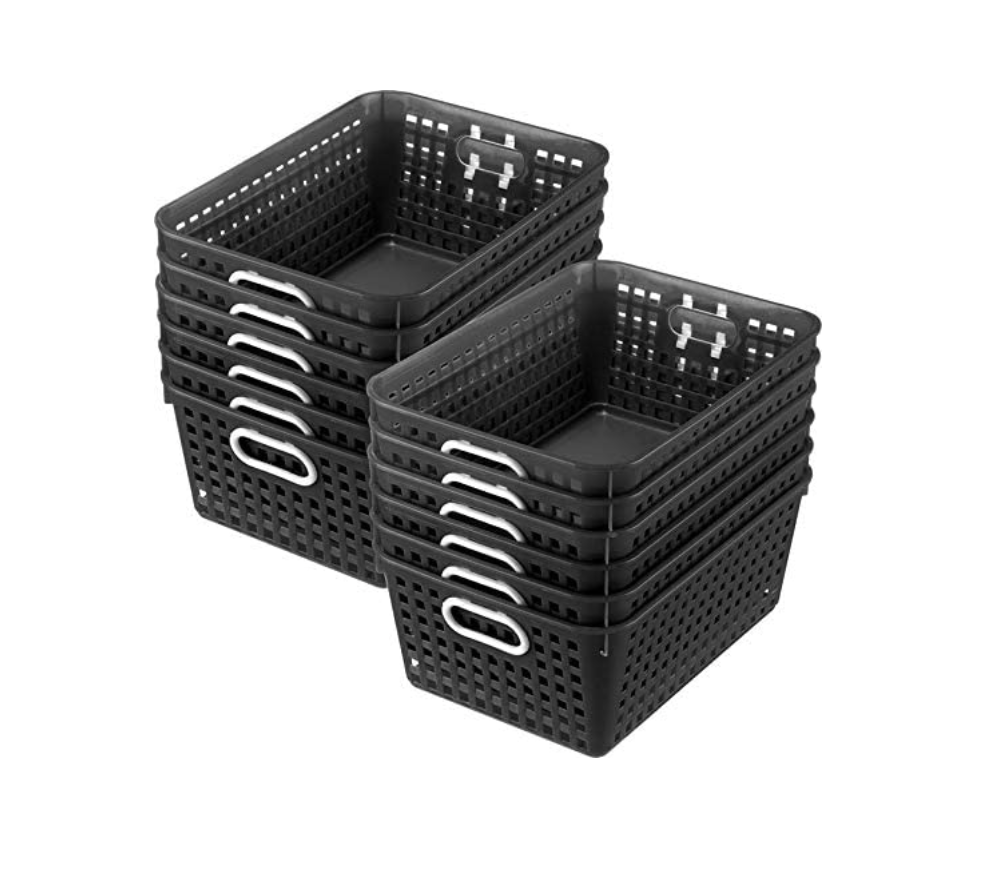
Our Favorite Classroom Library Tips from Teachers
1- Make “Librarian” one of your classroom jobs. Each week a new set of students ensure the classroom library is in tip-top shape. It’s a great way to teach responsibility and organizational skills, and have students take pride in their classroom materials.
2- Have you heard about BookBuddy, a free app that catalogs your library?
3 – Use this Book Fair Wishlist to keep track of a special book a student would like to borrow from the class library. This freebie is also super helpful for tracking favorites when the book fair comes to school!
More Tips on Classroom Organization
1- Teacher desk organization hacks
2- All the classroom setup ideas (photos included!)
3- Our favorite organizational tools on Amazon!


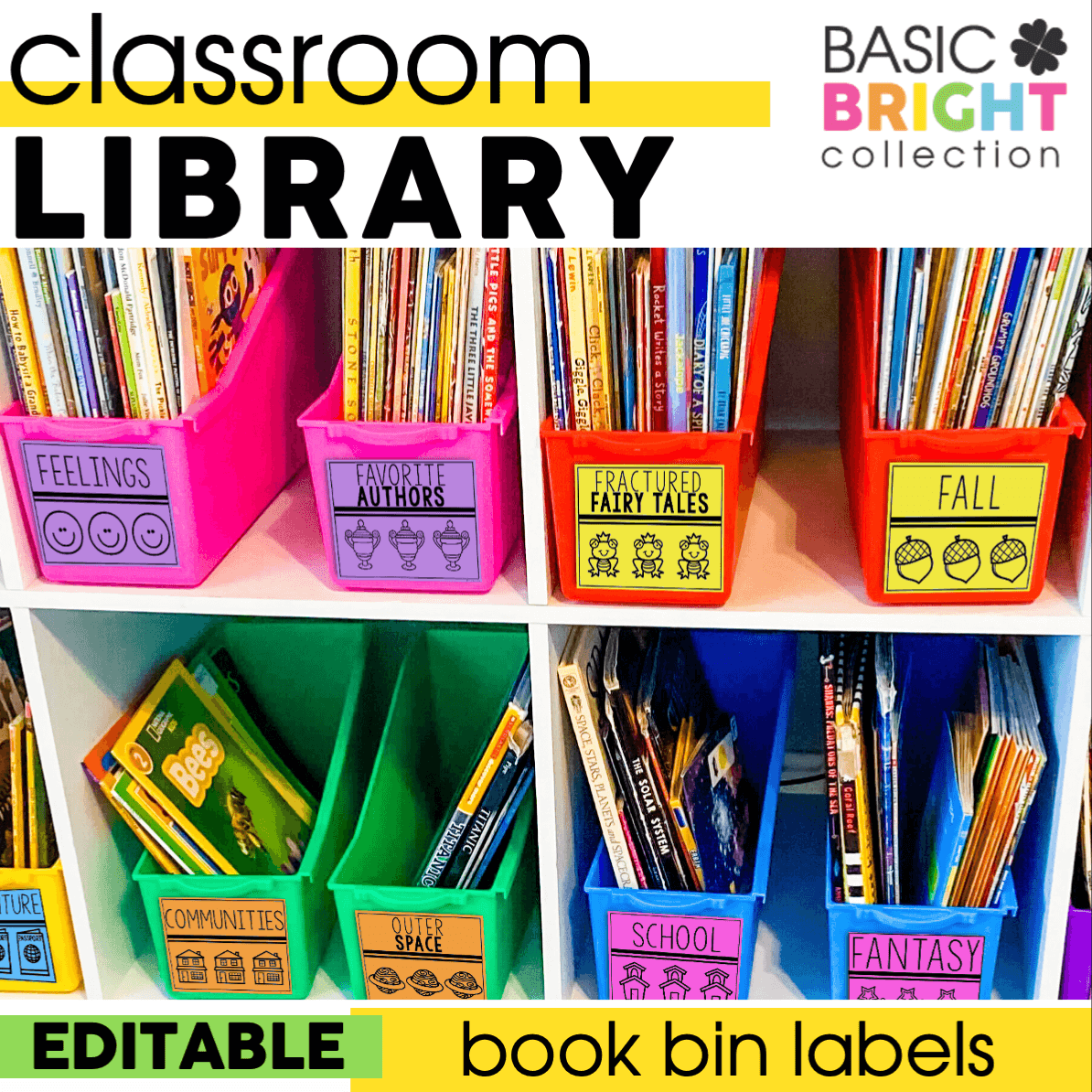



0 Comments